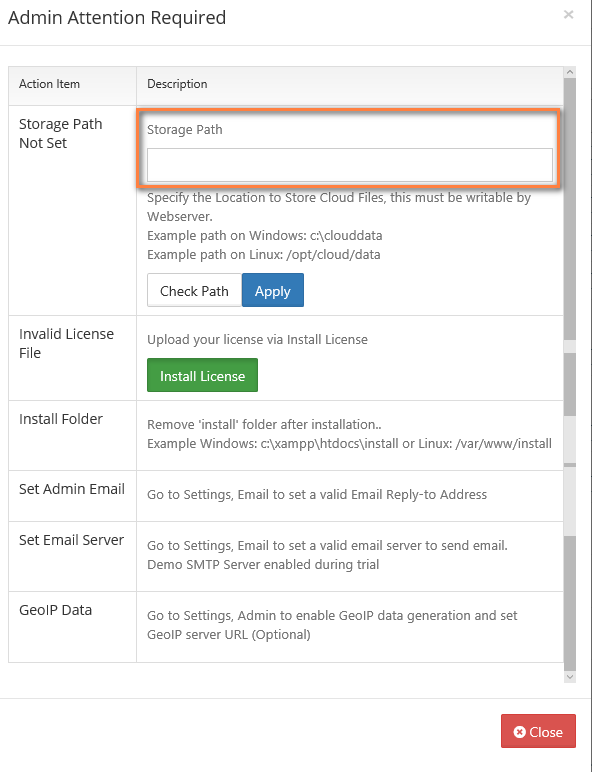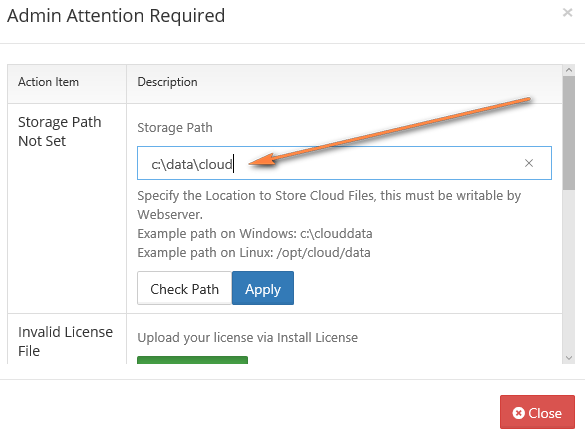Configure the Managed Storage Path
FileCloud Server is sometimes called on-premises. This is because you are using the storage space you have locally in your infrastructure to store the files managed by FileCloud Server.
- Managed Disk Storage is just a path to the location where the user files are stored locally and can be accessed directly by FileCloud Server
- When you specify the path to managed storage, you allow FileCloud complete control over the management of user content
- Managed storage can be a path to file systems, a local hard disk, and Storage Area Network (SAN) or Network Area Storage (NAS) disks
When setting up FileCloud, a critical setting is the path where FileCloud stores its files.
Setting up Managed Storage Path for Local Storage is only needed if you are using FileCloud Local Storage.
If you are using Amazon S3, you don't need to set this path.
To configure the storage path:
Use the Admin Attention Required dialog for the initial setup.
Use the Admin portal to manage storage path changes.


